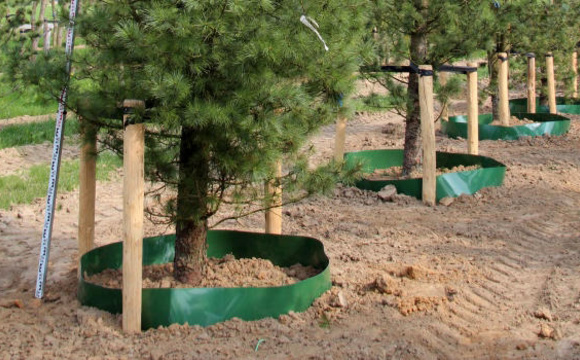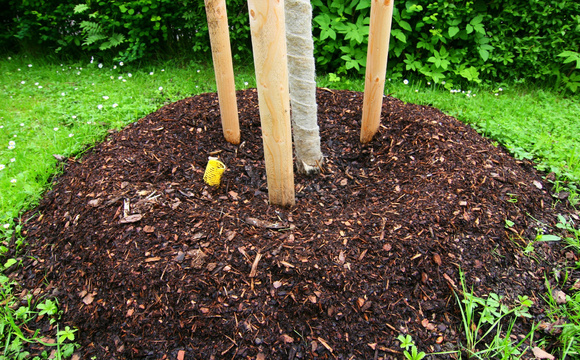Trees need care, especially in the first years after planting. The first pruning is important to optimize the relationship between roots and crown. In dry periods, it is not yet possible for the tree to find sufficient amounts of water, which is why it also needs to be watered during the first three years. And just like in nature, a tree needs nutrients to grow.
The first pruning after planting
Immediately after planting a tree, the crown must be pruned back to restore the relationship between the roots and the crown, thereby reducing evaporation. This is because roots are always lost when a tree is transplanted. If not pruned back, there is a risk that the crown will be too large for the limited amount of roots and that too little water can be supplied for the tree’s evapotranspiration, resulting in branch death or worse. This risk is particularly high for fast-growing varieties and in coastal areas.
The first pruning can also be done by the nursery to prepare for planting. Otherwise, and if there is much root loss, the crown must be pruned back no more than 25%. Pruning is about shortening the crown (cutting the outside) and not about thinning the crown. Also, branches that are accidentally broken or damaged during transport and planting must be removed during the first pruning.
Fast-growing cultivars, in particular, do better after the first pruning and grow better and faster than trees that are not pruned before or immediately after planting. In the first growing season, they have regained the width of the crown before pruning, and in the second growing season they become even wider than unpruned trees. After planting and the first pruning, the tree is not pruned for three years (except for trunk shoots and root shoots.
Watering
After planting, a tree must receive regular water to grow – especially during dry periods. For this purpose, a watering rim can be placed around the root ball. This is a plastic rim that extends about 20 cm above the soil surface. Often, a drainage system is attached. In this case, however, watering should not be done only through the drainage, the root ball must also be watered. During the first three growing seasons, the tree needs additional water during dry periods. After three years, a root system has developed that allows the tree to supply itself with water.

Watering is precision work. If watered too little, the tree dies. But it also dies if there is too much water, because in this case oxygen can no longer reach the roots. The amount of water and the frequency of watering must therefore always be adapted to the conditions. To determine whether the soil is dry and the tree needs water, it is not enough to check the soil only at the soil surface. After a sprinkling rain, the soil may look moist enough even though the deeper layers have dried out. Or, the soil surface may appear too dry after a short dry period, even though the deeper layers are still moist enough.
To determine the actual moisture content, it is necessary to test at a depth of 15 cm. There is a rule of thumb for determining water content: Trees with a trunk diameter of less than 60 cm need 200 to 300 liters of water each time, trees with a trunk diameter of more than 60 cm need 300 to 500 liters each time. Water must be given from the moment when the shoots swell and unfold. For conifers, it is recommended to spray water over the crowns in the evening to reduce evaporation through the needles. Control of moisture levels is important throughout the growing season, as well as control of anchorage and the development of diseases and parasites, so that timely intervention can be made.
Enough nutrients
Even after planting, it is necessary to supply the soil with nutrients. In a forest, after all, a tree is regularly fertilized by composted leaves, flowers and fruit residues. If the organic material under the tree is continuously removed, the tree will need additional organic fertilization in the form of compost, deposited manure or cow dung granules. The administration of artificial fertilizer is necessary only if a deficiency is detected by soil tests. Unnecessary administration of NPK artificial fertilizers should be avoided, as it often leads to an imbalance in the soil and thus to undesirable results.

To promote optimal growth, a mulch layer with organic residues of leaves, flowers and fruits should be made within the width of the crown. This is the best way to imitate the situation in a forest and ensure a permanently moist environment in the top layer of soil and optimal nutrition of the soil. Weeds have difficulty developing in this layer, and fallen leaves can be composted on site during the winter and contribute to the natural cycle.
Protecting oaks from the oak splitting beetle
Newly planted oaks often experience stress from transplanting, making them easy prey for the oak leaf beetle. The oaks release a stress hormone that attracts the beetles.

